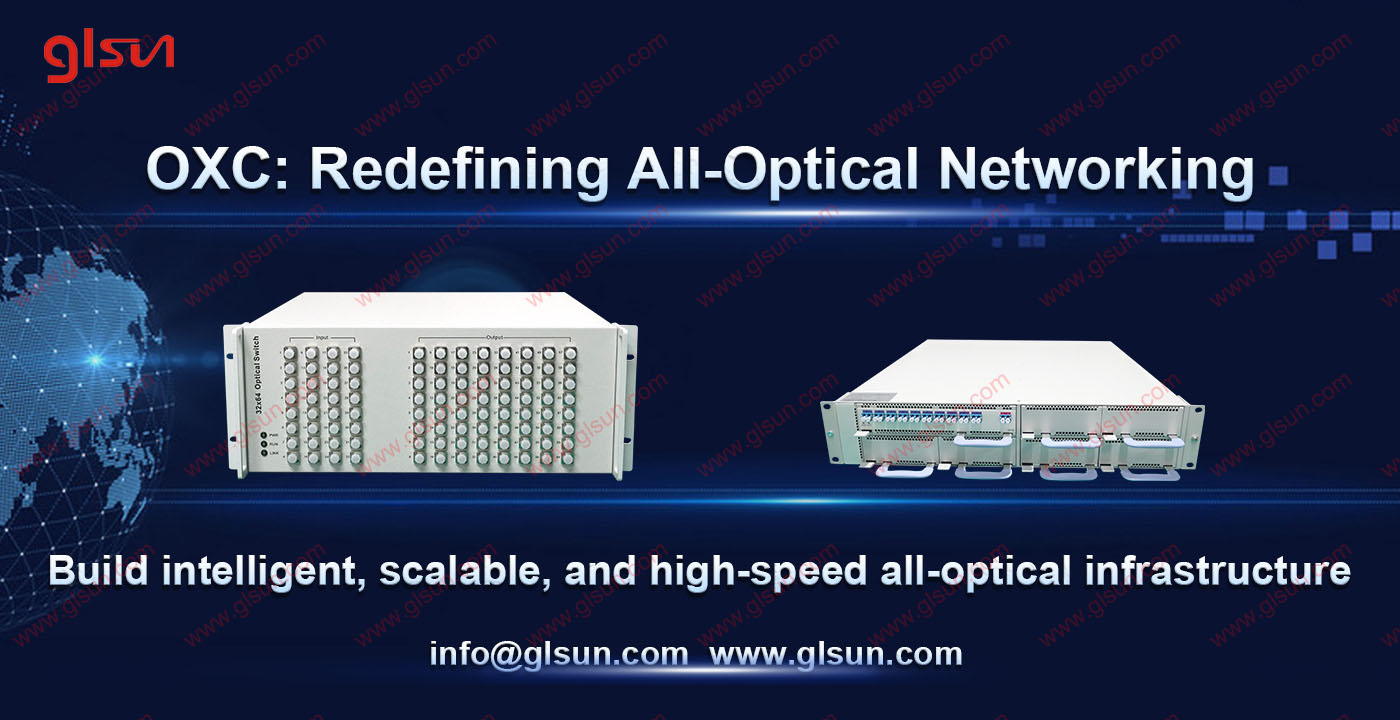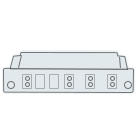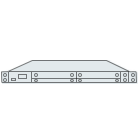Fiber Optic Tech
The Power of Optical Cross-Connects in High-Performance Computing
In the fast-paced world of high-performance computing (HPC), where massive datasets are processed at lightning speeds to drive breakthroughs in AI, scientific research, and complex simulations, network efficiency isn't just a luxury—it's a necessity. As HPC networks scale to handle exabytes of data and interconnect thousands of nodes, traditional electronic switching methods fall short, introducing bottlenecks, latency, and energy inefficiencies. Enter Optical Cross-Connects (OXC): the game-changing technology that's revolutionizing how these networks operate. But why exactly do HPC networks need OXC? Let's dive in and explore the compelling reasons that make OXC an indispensable tool for the future of computing.
Unmatched Speed and Bandwidth for Demanding Works
HPC environments thrive on speed. Whether it's simulating climate models or training neural networks, every microsecond counts. OXC enables the switching of high-speed optical signals directly in the optical domain, without the need for cumbersome optical-to-electrical conversions that slow things down. This all-optical approach supports terabit-per-second data rates, allowing HPC networks to manage massive traffic flows seamlessly. Imagine interconnecting supercomputers across data centers with minimal delay—OXC makes this a reality, ensuring that your computations aren't held back by outdated infrastructure.
In fact, OXCs are designed specifically for fiber optic networks, where they route signals flexibly and efficiently, handling the high-bandwidth demands of modern applications like big data analytics and real-time processing. For HPC operators, this means faster results, quicker insights, and a competitive edge in industries where time is money.
Enhanced Reliability and Reduced Downtime
Downtime in HPC can be catastrophic, leading to lost research hours or delayed innovations. OXC steps up by minimizing human intervention in network management, which drastically reduces operating errors and boosts overall system reliability. By automating the cross-connection of optical signals at network nodes, OXC ensures stable, error-free operations even under heavy ""s.
Moreover, in interconnected HPC setups, OXCs enhance network resilience by allowing for quick rerouting of signals around failures, much like a smart traffic system that avoids jams. This reliability is crucial for mission-critical applications in sectors like healthcare simulations or financial modeling, where uninterrupted performance is non-negotiable. With OXC, you can trust your network to stay up and running, safeguarding your investments and accelerating your projects.
Scalability and Flexibility for Growing Networks
As HPC networks expand—think cloud-based supercomputing or distributed AI training—the need for scalable infrastructure becomes paramount. OXCs provide dynamic provisioning of services, acting as large-scale switches in the optical layer that adapt to changing demands. They allow for flexible configuration of fiber optic paths, making it easier to add nodes, upgrade bandwidth, or reconfigure setups without overhauling the entire system.
This adaptability is especially vital in data centers and telecommunications hubs supporting HPC, where OXCs manage optical transmission networks efficiently by cross-connecting signals at the core. Whether you're scaling up for a new research initiative or integrating with edge computing, OXC offers the agility to grow without the headaches of traditional methods. It's no wonder they're essential for internet infrastructure and high-demand applications.
Cost and Power Efficiency: A Sustainable Choice
In an era where energy costs and sustainability are top priorities, OXC delivers significant savings. By eliminating the need for repeated optical-electrical conversions, these devices reduce power consumption and operational expenses. For HPC facilities running 24/7, this translates to lower electricity bills and a smaller carbon footprint, all while maintaining peak performance.
Additionally, OXCs streamline network management for telecommunications carriers and data center operators, cutting down on hardware needs and maintenance costs. They're the "gold standard" for direct interconnections, enabling efficient data exchange that optimizes resource use. Investing in OXC isn't just about performance—it's about building a cost-effective, future-proof HPC ecosystem.
The Future of HPC is Optical
In summary, Optical Cross-Connects are not just an upgrade; they're a necessity for high-performance computing networks aiming to push the boundaries of what's possible. From blazing-fast speeds and ironclad reliability to unparalleled scalability and efficiency, OXC addresses the core challenges of modern HPC. As data volumes explode and computational demands intensify, embracing OXC technology will position your network at the forefront of innovation.
Ready to supercharge your HPC infrastructure? Explore OXC solutions today and unlock the full potential of your computing power. The optical revolution is here—don't get left in the dark!




















